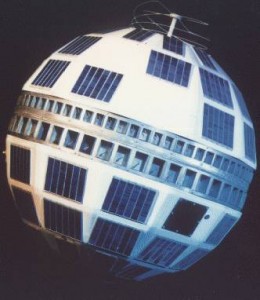 On July 10, 1962, Telstar I was launched, the first communications satellite to transmit live television across the Atlantic. The term Global Village was coined at about the same time by Marshall McLuhan in his books The Gutenberg Galaxy: The Making of Typographic Man (1962) and Understanding Media (1964). McLuhan was referring to the effect of radio in the 1920s which brought people together faster, and more intimately.
On July 10, 1962, Telstar I was launched, the first communications satellite to transmit live television across the Atlantic. The term Global Village was coined at about the same time by Marshall McLuhan in his books The Gutenberg Galaxy: The Making of Typographic Man (1962) and Understanding Media (1964). McLuhan was referring to the effect of radio in the 1920s which brought people together faster, and more intimately.
Telstar ushered in a new, more visual global village and the power and frequency of this visual world continues to grow. As I've written about before, this current generation of Americans age 8-18 is in and around media about 10 hours and 45 minutes a day -- of which about 2/3rds is visual, moving images (aka video).
Fittingly, YouTube announced yesterday that they are creating a "partner grant" program in which they will advance creators of content a sum of their future revenue share. Put another way, YouTube is creating a huge crowdsourced production studio. It is interesting to note that 48 years ago the true breakthrough was in creating the technology to enable video to traverse one ocean. Today, we have a standard global infrastructure of the internet, and the innovations are in how the materials are gathered and shared (e.g. YouTube) and how they are financed (e.g. their grant program).
What this means is that YouTube is using its market position to help lower the risk of innovation, and it's a vehicle to create even more choice and competition. I think all media companies who have an audience need to learn to do the same -- or all the best young talent may find their way to YouTube and stay there. As someone who used to read hundreds and hundreds of exams when I was a professor, I can personally attest to the fact that few people (less than 1%) tell a story well. In this global, visual village, YouTube is doing the right thing to unlock the story-telling talent through grants, because that is the source of lasting audience creation and finding those few geniuses who can really spin a yarn.